Your gateway to endless inspiration
Cosmic - Blog Posts
Can you outrun this?
Idea to @/coquettecomics on c.ai this is INSANELY ooc because it's my drself x Rex, I don't know how long i'll work on it but i'll keep updating... Probably. I also don't know how to tag a fanfic. or how to cut it.
Rex part posted soon.
|| M4F, Angst, regret, cosmic deity , switching POVS
⋆。°✩˙✮⋆˙ °⋆。𖦹°💥*ੈ🧨‧💣°𖦹。⋆
I stood in an alleyway, it was dark and cold out- Rex Splode stood in front of me with a hurt look on his face, the rain pelting against the ground only setting the ambience even more. My eyes darted past him to the open road, where I so desperately wanted to go. Get out of this awkward situation. Get out of here.
“You really think I wouldn't have come after you?” Rex finally broke the silence, his hands balling into fists at his sides. Of course he was the first to notice, I didn’t know how to tell him I was leaving, I needed to leave. Everything was too much. Omni-Man, Cecil, all these villains, never having a moment of peace? I was happier alone floating through space while having a mental breakdown.
“You think running away from this will change anything? Change us? It won’t.” Rex started, biting his lip as he let out a sigh. “Viviane… I need you. The guardians need you-” Rex looked down and shook his head. “You can’t outrun this life, the people need you. The threats and villains are only getting more dangerous,” Rex looked back up, locking eyes with mine in one of the most awkward staring competitions I've ever had. “... Say you don’t love me, say you’re done with this life and I'll let you go, I won't even chase after you.”
“... I’m done with this life.” I managed to get the words out, my hands clenched so tight I felt my nails digging into my palms. I couldn’t continue looking at him, and I couldn't say I didn't love him. I’d be lying to both of us.
Rex felt as if he’d been shot, an aching pain in his chest he hated so much. He felt as if all the wind had been punched out of his lungs, tears watering in his eyes as a small show of vulnerability, he looked away so I couldn't see the tears threatening to fall, but I still could. He took a step to the side, his expression hardening as his eyes searched my face for any hints of doubt, and when he saw none- “Then go.” Rex gestured towards the road. “Go.” his voice came out a ragged and pained whisper.
I felt myself float above the ground, my feet hovering just above it, a nervous habit. A habit I usually did when I was upset or angry, trying to detach myself from reality, from humanity. “... Rex-” I tried to speak, but he cut me off. “No.” He spoke firmly, his body tense and rigid. “You said you’re done, so go.”
He’s trying to be strong, but it was tearing through him. His eyes stinging as he held back the tears. I stared at him for a moment longer, my bottom lip trembling as I hung my head low once more. “... I’m sorry.” My voice broke, my hands trembling as I floated past him out towards the road.
Rex watched me go, my sob ripping through his heart, making the ache more painful. He wanted to chase after me, but his feet stayed planted as he watched my figure slowly vanish from sight, the dam finally broke and his tears began falling, blending in with the rain as it streamed down his face.
⋆。°✩˙✮⋆˙ °⋆。⋆。°✩˙✮⋆˙ °⋆。⋆。°✩˙✮⋆˙ °⋆。
Viviane.
I soared through space for a little bit, the tears streaming down my face freezing and breaking off as I flew, the atmosphere didn’t affect me though. Perks of being a cosmic demigod I guess.
Finally I landed down on Thagrea, a planet like Earth- Just made specifically for demigods and their children. Two people lived on this planet I actually knew, the only two people on this planet I trust.
I’d knock on a door and wait for either Mason or Xander to answer, they were my cousins, on my divine side at least. Their father, Ither, god of dreams and nightmares, was the brother to my mother, Dancia. It’s all sort of complicated.
After a moment, the door swung open, a tall and dark skinned man held a sword out at me with a stern look, but it faltered when his eyes laid on me. “... Viviane? What- What are you doing here?” He slowly lowered his sword, his eyes scanning past me and around the neighborhood as if he was expecting someone else to be with me.
“Xander I… I-I messed up, really bad.” My voice trembled, as much as I wanted to suppress my tears and broken voice I couldn't. Xander’s features softened as he set his sword off to the side and ushered me in. “Come in, come in. It’s alright. Tell me what happened.”
I sat on the couch and covered my face with my hands, letting out a sob. “I can’t do it. I can’t help Earth anymore, the one thing my mother made me do, and I can't. I ruined- I ruined the o-one good human relationship too, i think. I… I love him… And I just… Ran away. But I can't go back, and he won’t give up. He never knows when to quit!” I cried. Xander sat beside me, rubbing my back gently just as his twin, Mason stepped inside.
“It’s okay…” Xander murmured, flashing a nervous glance to Mason. “This… Guy you ran away from, does he know you love him?” Xander asked hesitantly, I leaned into his hand and shrugged. “I-I don’t know…”
“Does… Does he know what you are?” Mason finally spoke up, his arms crossing over his chest. “... No. I never told anyone, the only one who knows is my father, and Cecil to an extent.” I sighed and wiped away my tears.
“...Bitch what DOES he know?!”
“Mason!” Xander looked at Mason with a bewildered expression. “What!? This guy has a right to know he’s dating a demigod, okay!” Mason threw his hands up in the air, in dramatic fashion as usual. “I wouldn’t want to date one of us, not knowing what we are or what we’re capable of!”
“Yeah well that’s not helping her current mood, asshole-” I cut Xander up, waving my hand in the air. “No… He’s right. I haven’t been truthful at all about what I am, about my origins… It’s too late now though, he probably doesn’t want to see me ever again.”
LOOK AT THAT LITTLE SHIT RIGHT NOW!!!!! 💥💥 this is (you guessed it..) ANOTHER redesign; original design was made by Ladyyz on toyhou.se. i really like this one.. silly raccoon with dino hat make me go 🫶🙏🙏🤲🤲🙏🤲🤲🫶🙏🫶🫶🙏🙏🤲

her name is Backbite-Brownie or something like that?? im not entirely sure yet but i do think it kinda fits her theme (in my head the name actually works SO much but i cant really explain it? gbb ⚰️⚰️) + it sounds cool lmaoo
undertale/sans AU fans pspspspsppspsps







WOOO!! Undertale!!! Asks are open!
Cosmic - @sharkysalmon
Lullaby - @scrambao
This the The Wishing Star
They are the main antagonist of a book I'm trying to get back to writing.

Caption: The Wishing Star if they were an Eldritch Horror instead of a Cosmic Horror
(that actual WS doesn't have an incomprehensible amount of eyes on their body)
What do you think?

happy 8th anniversary undertale! take some existential dread!

Portal Gallery Presents: SOMETHING COSMIC
Featuring new works by: _Pia Coronel
_Monserrat Indarte
_Armando Ramos
_Jen Plaskowitz
_G. Romero:
*Poster Design by G.Romero
I love playful women 😍
Cosmic Starlight, you the girl

🏊♂️ Down for a dip in the Cosmic Reef?
Nicknamed the Cosmic Reef because it resembles an undersea world, this is a vast star-forming region in the Large Magellanic Cloud, a satellite galaxy of the Milky Way.
Released in April 2020 to celebrate the Hubble Space Telescope’s 30th anniversary, the reef showcases the beauty and mystery of space in this complex image of starbirth. Throughout its decades of discoveries, Hubble has yielded over 1.5 million observations, providing data that astronomers around the world have used to write more than 18,000 peer-reviewed scientific publications, making it the most prolific space observatory in history.
Learn more about Hubble’s celebration of Nebula November and see new nebula images, here.
You can also keep up with Hubble on Twitter, Instagram, Facebook, and Flickr!
Image credits: NASA, ESA, and STScI

These three towers are only a small portion of the massive Eagle Nebula.
Known as the “Pillars of Creation,” the beautiful tendrils of cosmic dust and gas are giving birth to new stars, buried within their spires. This iconic image only shows a stretch of about four or five light-years … while the whole nebula itself spans about 70 by 55 light-years.
Learn more about Hubble’s celebration of Nebula November and see new nebula images, here.
You can also keep up with Hubble on Twitter, Instagram, Facebook, and Flickr!
Image credits: NASA, ESA and the Hubble Heritage Team (STScI/AURA)
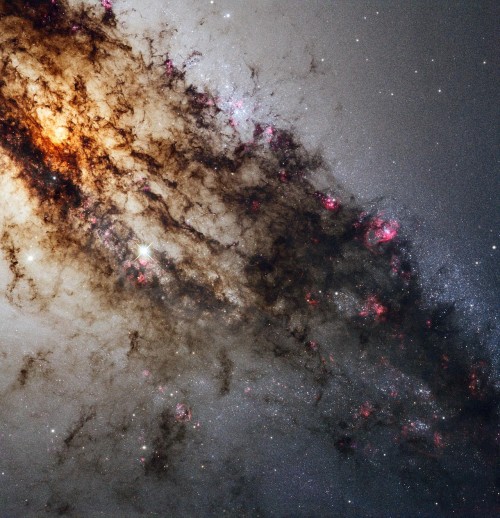
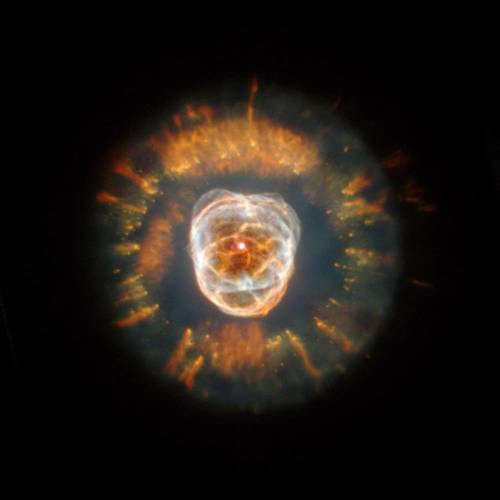
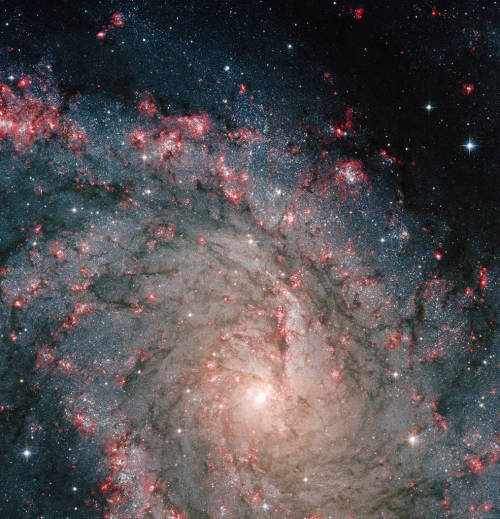
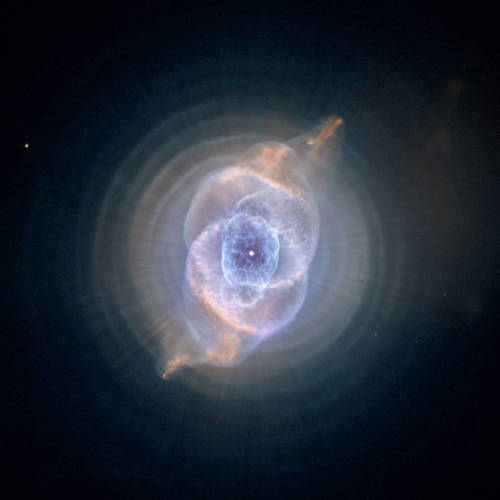
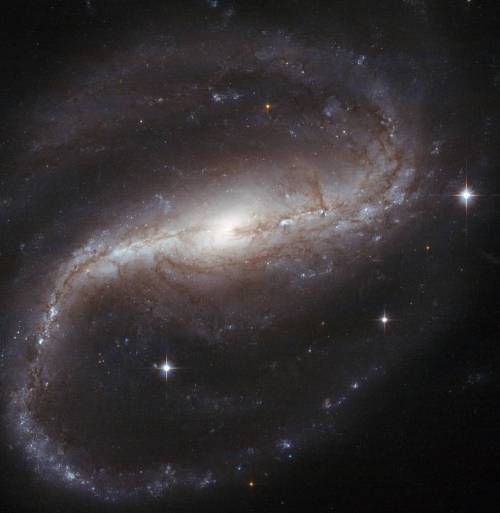
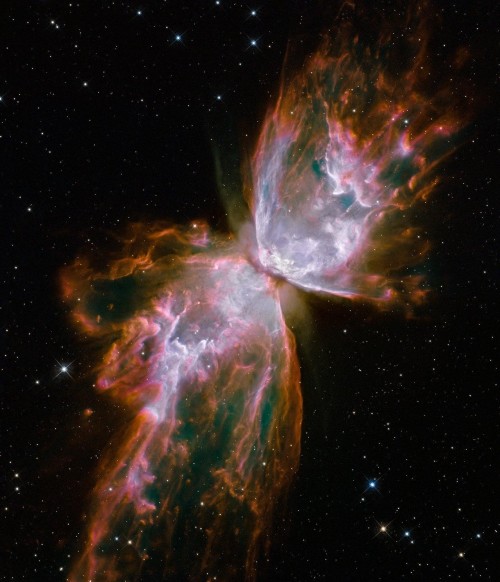

Be your own explorer ✨the cosmos is waiting...
From nearby clouds of gas and dust to remote galaxies that formed billions of years ago, tour the night sky with our Hubble Space Telescope’s new Caldwell catalog. The catalog of star clusters, galaxies and nebulas was first produced to highlight cosmic wonders visible to amateur astronomers. Since then Hubble has taken images of 95 out of the 109 objects, bringing these objects to life in exquisite detail.
While the objects can be observed using modest ground-based telescopes, Hubble’s Caldwell collection has been assembled for astronomers to see the finer details of each object in the night sky.
View the full collection here!
Make sure to follow us on Tumblr for your regular dose of space: http://nasa.tumblr.com.
Not Your Average Delivery Vehicle
Just like people here on Earth, astronauts get shipments too! But not in the typical sense. 8,200 pounds of cargo, including supplies and scientific experiments, is on its way to the International Space Station thanks to Northrop Grumman’s Cygnus cargo spacecraft. This ‘package’ launched out of Wallops Flight Facility on Nov. 2, 2019 at 9:59 a.m. EDT. The investigations aboard the rocket range from research into human control of robotics in space to reprocessing fibers for 3D printing. Get ready, because these new and exciting experiments are arriving soon!

THE SEARCH FOR DARK MATTER
Stars, planets and their molecules only make up 15% of our universe. The rest is dark matter. However, no one has actually ever been able to see or study it. The Alpha Magnetic Spectrometer -02 (AMS-02) has been searching for this substance since 2011. Northrop Grumman’s CRS-12 mission carries new parts for AMS-02 that will be added during a series of upcoming spacewalks so that the instrument can continue to help us shed light on this mystery.

THE REMOTE EXPLORATION OF EARTH
Rovers operated by astronauts on the International Space Station will attempt to collect geological samples on Earth as part of an investigation called ANALOG-1. The samples, however, are not the important part of the study. Humans experience degraded sensorimotor functions in microgravity that could affect their operation of a robot. This study is designed to learn more about these issues, so that one day astronauts could use robots to perform research on planets they hope to walk on.

WOAH, THAT’S RAD
The AstroRad Vest is pretty rad. So rad, in fact, that it was sent up on the launch of Northrop Grumman’s CRS-12 mission. This vest intends to protect astronauts from harmful radiation in space. While going about normal activity on the space station, astronauts will wear AstroRad and make note of things like comfort over long periods of time. This will help researchers on Earth finalize the best design for future long duration missions.

EVEN ASTRONAUTS RECYCLE
The Made in Space Recycler (MIS) looks at how different materials on the International Space Station can be turned into filament used for 3D printing. This 3D printing is done right there in space, in the Additive Manufacturing Facility. Similar studies will be conducted on Earth so that comparisons can be made.

FASTER, CHEAPER ACCESS TO SPACE
A collaboration between Automobili Lamborghini and the Houston Methodist Research Institute will be using NanoRacks-Craig-X FTP to test the performance of 3D-printed carbon fiber composites in the extreme environment of space. The study could lead to materials used both in space and on Earth. For example, the study may help improve the design of implantable devices for therapeutic drug delivery.

DESSERT, FRESH FROM THE OVEN
Everyone enjoys the aroma of fresh-baked cookies, even astronauts. On future long-duration space missions, fresh-baked food could have psychological and physiological benefits for crew members, providing them with a greater variety of more nutritious meals. The Zero-G Oven experiment examines heat transfer properties and the process of baking food in microgravity.

Want to learn about more investigations heading to the space station (or even ones currently under way)? Make sure to follow @ISS_Research on Twitter and Space Station Research and Technology News on Facebook.
If you want to see the International Space Station with your own eyes, check out Spot the Station to see it pass over your town.
Make sure to follow us on Tumblr for your regular dose of space: http://nasa.tumblr.com.
Take Your GIF Game to Cosmic Levels & React Like a NASA Astronaut!
We partnered with GIPHY to help take your GIF game to cosmic levelssss. As the Artemis generation who will witness a whole new era of space travel, we wanted make sure you could express yourself... like an astronaut!
So, if you want to show some love...

... or you’re pumped we’re half way to Friday ...

We’ve got you covered.

Don’t miss our whole collection of astronaut reactions!

Want to use them on your device?

Type ‘NASAReaction’ in your device’s GIPHY keyboard...

.... and choose your favorite!

You can access our full collection of official NASA astronaut GIFs by visiting: https://giphy.com/nasa/reaction-pack
Make sure to follow us on Tumblr for your regular dose of space: http://nasa.tumblr.com
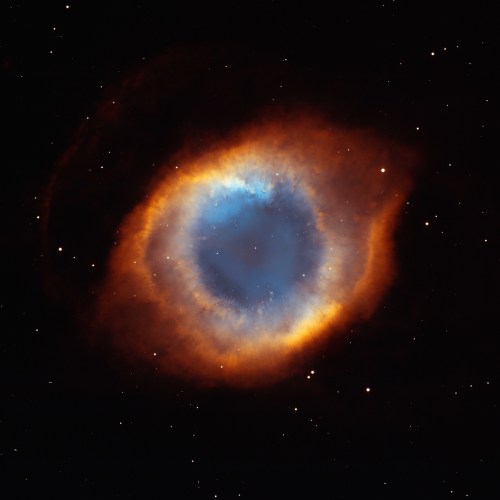
Say hello to the Helix Nebula 👋
In 2001 and 2002, our Hubble Space Telescope looked at the Helix Nebula and it looked right back! This planetary nebula is right in our cosmic neighborhood, only about 650 light-years away. Gigantic for this type of cosmic object, the Helix Nebula stretches across 2 to 3 light-years.
With no actual connection to planets, planetary nebulas like this one are produced when a medium-mass star dies and sloughs off its outer layers. These gaseous layers are expelled into space at astonishing speeds where they light up like fireworks. The Helix Nebula is one of the closest planetary nebulas to Earth, giving scientists an up-close view of its strange affairs.
Through Hubble’s observations, scientists have learned that the Helix Nebula isn’t doughnut-shaped as it appears. Instead it consists of two disks that are nearly perpendicular to each other — the nebula looks like an eye and bulges out like one too!
Hubble has also imaged comet-like tendrils that form a pattern around the central star like the spokes on a wagon wheel, likely resulting from a collision between gases. The dying star spews hot gas from its surface, which crashes into the cooler gas that it ejected 10,000 years before. Eventually the knots will dissipate into the cold blackness of interstellar space.
Make sure to follow us on Tumblr for your regular dose of space: http://nasa.tumblr.com.
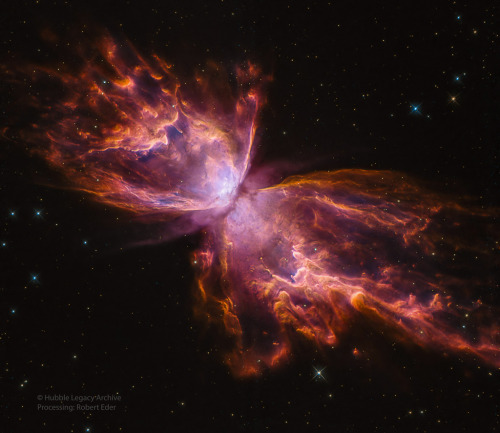
DYK the bright clusters and nebulae of planet Earth's night sky are often named for flowers or insects?
Though its wingspan covers over 3 light-years, NGC 6302: The Butterfly Nebula is no exception! With an estimated surface temperature of about 250,000 degrees C, the dying central star of this particular planetary nebula has become exceptionally hot, shining brightly in ultraviolet light but hidden from direct view by a dense torus of dust. This sharp close-up was recorded by the Hubble Space Telescope in 2009. The Hubble image data is reprocessed here, showing off the remarkable details of the complex planetary nebula.
Image Credit: NASA, ESA, Hubble, HLA; Reprocessing & Copyright: Robert Eder
Make sure to follow us on Tumblr for your regular dose of space: http://nasa.tumblr.com.
Three Ways to Travel at (Nearly) the Speed of Light

One hundred years ago, Einstein’s theory of general relativity was supported by the results of a solar eclipse experiment. Even before that, Einstein had developed the theory of special relativity — a way of understanding how light travels through space.
Particles of light — photons — travel through a vacuum at a constant pace of more than 670 million miles per hour.

All across space, from black holes to our near-Earth environment, particles are being accelerated to incredible speeds — some even reaching 99.9% the speed of light! By studying these super fast particles, we can learn more about our galactic neighborhood.
Here are three ways particles can accelerate:
1) Electromagnetic Fields!
Electromagnetic fields are the same forces that keep magnets on your fridge! The two components — electric and magnetic fields — work together to whisk particles at super fast speeds throughout the universe. In the right conditions, electromagnetic fields can accelerate particles at near-light-speed.

We can harness electric fields to accelerate particles to similar speeds on Earth! Particle accelerators, like the Large Hadron Collider and Fermilab, use pulsed electromagnetic fields to smash together particles and produce collisions with immense amounts of energy. These experiments help scientists understand the Big Bang and how it shaped the universe!
2) Magnetic Explosions!

Magnetic fields are everywhere in space, encircling Earth and spanning the solar system. When these magnetic fields run into each other, they can become tangled. When the tension between the crossed lines becomes too great, the lines explosively snap and realign in a process known as magnetic reconnection. Scientists suspect this is one way that particles — for example, the solar wind, which is the constant stream of charged particles from the Sun — are sped up to super fast speeds.

When magnetic reconnection occurs on the side of Earth facing away from the Sun, the particles can be hurled into Earth’s upper atmosphere where they spark the auroras.
3) Wave-Particle Interactions!

Particles can be accelerated by interactions with electromagnetic waves, called wave-particle interactions. When electromagnetic waves collide, their fields can become compressed. Charged particles bounce back and forth between the waves, like a ball bouncing between two merging walls. These types of interactions are constantly occurring in near-Earth space and are responsible for damaging electronics on spacecraft and satellites in space.

Wave-particle interactions might also be responsible for accelerating some cosmic rays from outside our solar system. After a supernova explosion, a hot, dense shell of compressed gas called a blast wave is ejected away from the stellar core. Wave-particle interactions in these bubbles can launch high-energy cosmic rays at 99.6% the speed of light.
Make sure to follow us on Tumblr for your regular dose of space: http://nasa.tumblr.com.
Things That Go Bump in the Gamma Rays
Some people watch scary movies because they like being startled. A bad guy jumps out from around a corner! A monster emerges from the shadows! Scientists experience surprises all the time, but they’re usually more excited than scared. Sometimes theories foreshadow new findings — like when there’s a dramatic swell in the movie soundtrack — but often, discoveries are truly unexpected.

Scientists working with the Fermi Gamma-Ray Space Telescope have been jumping to study mysterious bumps in the gamma rays for a decade now. Gamma rays are the highest-energy form of light. Invisible to human eyes, they’re created by some of the most powerful and unusual events and objects in the universe. In celebration of Halloween, here are a few creepy gamma-ray findings from Fermi’s catalog.

Stellar Graveyards
If you were to walk through a cemetery at night, you’d expect to trip over headstones or grave markers. Maybe you’d worry about running into a ghost. If you could explore the stellar gravesite created when a star explodes as a supernova, you’d find a cloud of debris expanding into interstellar space. Some of the chemical elements in that debris, like gold and platinum, go on to create new stars and planets! Fermi found that supernova remnants IC 443 and W44 also accelerate mysterious cosmic rays, high-energy particles moving at nearly the speed of light. As the shockwave of the supernova expands, particles escape its magnetic field and interact with non-cosmic-ray particles to produce gamma rays.

Ghost Particles
But the sources of cosmic rays aren’t the only particle mysteries Fermi studies. Just this July, Fermi teamed up with the IceCube Neutrino Observatory in Antarctica to discover the first source of neutrinos outside our galactic neighborhood. Neutrinos are particles that weigh almost nothing and rarely interact with anything. Around a trillion of them pass through you every second, ghost-like, without you noticing and then continue on their way. (But don’t worry, like a friendly ghost, they don’t harm you!) Fermi traced the neutrino IceCube detected back to a supermassive black hole in a distant galaxy. By the time it reached Earth, it had traveled for 3.7 billion years at almost the speed of light!

Black Widow Pulsars
Black widows and redbacks are species of spiders with a reputation for devouring their partners. Astronomers have discovered two types of star systems that behave in a similar way. Sometimes when a star explodes as a supernova, it collapses back into a rapidly spinning, incredibly dense star called a pulsar. If there’s a lighter star nearby, it can get stuck in a close orbit with the pulsar, which blasts it with gamma rays, magnetic fields and intense winds of energetic particles. All these combine to blow clouds of material off the low-mass star. Eventually, the pulsar can eat away at its companion entirely.

Dark Matter
What’s scarier than a good unsolved mystery? Dark matter is a little-understood substance that makes up most of the matter in the universe. The stuff that we can see — stars, people, haunted houses, candy — is made up of normal matter. But our surveys of the cosmos tell us there’s not enough normal matter to keep things working the way they do. There must be another type of matter out there holding everything together. One of Fermi’s jobs is to help scientists narrow down the search for dark matter. Last year, researchers noticed that most of the gamma rays coming from the Andromeda galaxy are confined to its center instead of being spread throughout. One possible explanation is that accumulated dark matter at the center of the galaxy is emitting gamma rays!

Fermi has helped us learn a lot about the gamma-ray universe over the last 10 years. Learn more about its accomplishments and the other mysteries it’s working to solve. What other surprises are waiting out among the stars?
Make sure to follow us on Tumblr for your regular dose of space: http://nasa.tumblr.com.
Using All of Our Senses in Space
Today, we and the National Science Foundation (NSF) announced the detection of light and a high-energy cosmic particle that both came from near a black hole billions of trillions of miles from Earth. This discovery is a big step forward in the field of multimessenger astronomy.
But wait — what is multimessenger astronomy? And why is it a big deal?
People learn about different objects through their senses: sight, touch, taste, hearing and smell. Similarly, multimessenger astronomy allows us to study the same astronomical object or event through a variety of “messengers,” which include light of all wavelengths, cosmic ray particles, gravitational waves, and neutrinos — speedy tiny particles that weigh almost nothing and rarely interact with anything. By receiving and combining different pieces of information from these different messengers, we can learn much more about these objects and events than we would from just one.

Lights, Detector, Action!
Much of what we know about the universe comes just from different wavelengths of light. We study the rotations of galaxies through radio waves and visible light, investigate the eating habits of black holes through X-rays and gamma rays, and peer into dusty star-forming regions through infrared light.

The Fermi Gamma-ray Space Telescope, which recently turned 10, studies the universe by detecting gamma rays — the highest-energy form of light. This allows us to investigate some of the most extreme objects in the universe.

Last fall, Fermi was involved in another multimessenger finding — the very first detection of light and gravitational waves from the same source, two merging neutron stars. In that instance, light and gravitational waves were the messengers that gave us a better understanding of the neutron stars and their explosive merger into a black hole.

Fermi has also advanced our understanding of blazars, which are galaxies with supermassive black holes at their centers. Black holes are famous for drawing material into them. But with blazars, some material near the black hole shoots outward in a pair of fast-moving jets. With blazars, one of those jets points directly at us!
Multimessenger Astronomy is Cool

Today’s announcement combines another pair of messengers. The IceCube Neutrino Observatory lies a mile under the ice in Antarctica and uses the ice itself to detect neutrinos. When IceCube caught a super-high-energy neutrino and traced its origin to a specific area of the sky, they alerted the astronomical community.
Fermi completes a scan of the entire sky about every three hours, monitoring thousands of blazars among all the bright gamma-ray sources it sees. For months it had observed a blazar producing more gamma rays than usual. Flaring is a common characteristic in blazars, so this did not attract special attention. But when the alert from IceCube came through about a neutrino coming from that same patch of sky, and the Fermi data were analyzed, this flare became a big deal!

IceCube, Fermi, and followup observations all link this neutrino to a blazar called TXS 0506+056. This event connects a neutrino to a supermassive black hole for the very first time.

Why is this such a big deal? And why haven’t we done it before? Detecting a neutrino is hard since it doesn’t interact easily with matter and can travel unaffected great distances through the universe. Neutrinos are passing through you right now and you can’t even feel a thing!
The neat thing about this discovery — and multimessenger astronomy in general — is how much more we can learn by combining observations. This blazar/neutrino connection, for example, tells us that it was protons being accelerated by the blazar’s jet. Our study of blazars, neutrinos, and other objects and events in the universe will continue with many more exciting multimessenger discoveries to come in the future.
Want to know more? Read the story HERE.
Make sure to follow us on Tumblr for your regular dose of space: http://nasa.tumblr.com
What are the Universe’s Most Powerful Particle Accelerators?
Every second, every square meter of Earth’s atmosphere is pelted by thousands of high-energy particles traveling at nearly the speed of light. These zippy little assailants are called cosmic rays, and they’ve been puzzling scientists since they were first discovered in the early 1900s. One of the Fermi Gamma-ray Space Telescope’s top priority missions has been to figure out where they come from.

“Cosmic ray” is a bit of a misnomer. Makes you think they’re light, right? But they aren’t light at all! They’re particles that mostly come from outside our solar system — which means they're some of the only interstellar matter we can study — although the Sun also produces some. Cosmic rays hit our atmosphere and break down into secondary cosmic rays, most of which disperse quickly in the atmosphere, although a few do make it to Earth’s surface.
Cosmic rays aren't dangerous to those of us who spend our lives within Earth's atmosphere. But if you spend a lot of time in orbit or are thinking about traveling to Mars, you need to plan how to protect yourself from the radiation caused by cosmic rays.

Cosmic rays are subatomic particles — smaller particles that make up atoms. Most of them (99%) are nuclei of atoms like hydrogen and helium stripped of their electrons. The other 1% are lone electrons. When cosmic rays run into molecules in our atmosphere, they produce secondary cosmic rays, which include even lighter subatomic particles.

Most cosmic rays reach the same amount of energy a small particle accelerator could produce. But some zoom through the cosmos at energies 40 million times higher than particles created by the world’s most powerful man-made accelerator, the Large Hadron Collider. (Lightning is also a pretty good particle accelerator).

So where do cosmic rays come from? We should just be able to track them back to their source, right? Not exactly. Any time they run into a strong magnetic field on their way to Earth, they get deflected and bounce around like a game of cosmic pinball. So there’s no straight line to follow back to the source. Most of the cosmic rays from a single source don’t even make it to Earth for us to measure. They shoot off in a different direction while they’re pin balling.

Photo courtesy of Argonne National Laboratory
In 1949 Enrico Fermi — an Italian-American physicist, pioneer of high-energy physics and Fermi satellite namesake — suggested that cosmic rays might accelerate to their incredible speeds by ricocheting around inside the magnetic fields of interstellar gas clouds. And in 2013, the Fermi satellite showed that the expanding clouds of dust and gas produced by supernovas are a source of cosmic rays.

When a star explodes in a supernova, it produces a shock wave and rapidly expanding debris. Particles trapped by the supernova remnant magnetic field bounce around wildly.

Every now and then, they cross the shock wave and their energy ratchets up another notch. Eventually they become energetic enough to break free of the magnetic field and zip across space at nearly the speed of light — some of the fastest-traveling matter in the universe.

How can we track them back to supernovas when they don’t travel in a straight line, you ask? Very good question! We use something that does travel in a straight line — gamma rays (actual rays of light this time, on the more energetic end of the electromagnetic spectrum).
When the particles get across the shock wave, they interact with non-cosmic-ray particles in clouds of interstellar gas. Cosmic ray electrons produce gamma rays when they pass close to an atomic nucleus. Cosmic ray protons, on the other hand, produce gamma rays when they run into normal protons and produce another particle called a pion (Just hold on! We’re almost there!) which breaks down into two gamma rays.

The proton- and electron-produced gamma rays are slightly different. Fermi data taken over four years showed that most of the gamma rays coming from some supernova remnants have the energy signatures of cosmic ray protons knocking into normal protons. That means supernova remnants really are powerful particle accelerators, creating a lot of the cosmic rays that we see!
There are still other cosmic ray sources on the table — like active galactic nuclei — and Fermi continues to look for them. Learn more about what Fermi’s discovered over the last 10 years and how we’re celebrating its accomplishments.
Make sure to follow us on Tumblr for your regular dose of space: http://nasa.tumblr.com.
From Frozen Antarctica to the Cold Vacuum of Space
A new experiment that will collect tiny charged particles known as galactic cosmic rays will soon be added to the International Space Station. The Cosmic Ray Energetics And Mass for the International Space Station payload, nicknamed ISS-CREAM, will soon be installed in its new home on the Station’s Japanese Experiment Module Exposed Facility. ISS-CREAM will help scientists understand more about galactic cosmic rays and the processes that produce them.

Wait, what are cosmic rays?
Cosmic rays are pieces of atoms that move through space at nearly the speed of light. Galactic cosmic rays come from beyond our solar system.

They provide us with direct samples of matter from distant places in our galaxy.
Why do these things go so fast?
Galactic cosmic rays have been sped up by extreme processes. When massive stars die, they explode as supernovas. The explosion’s blast wave expands into space along with a cloud of debris.

Particles caught up in this blast wave can bounce around in it and slowly pick up speed. Eventually they move so fast they can escape the blast wave and race away as a cosmic ray.
Where can we catch cosmic rays?
Cosmic rays are constantly zipping through space at these super-fast speeds, running into whatever is in their path -- including Earth.

But Earth’s atmosphere is a great shield, protecting us from 99.9 percent of the radiation coming from space, including most cosmic rays. This is good news for life on Earth, but bad news for scientists studying cosmic rays.
So… how do you deal with that?
Because Earth has such an effective shield against cosmic rays, the best place for scientists to study them is above our atmosphere -- in space. Since the 1920s, scientists have tried to get their instruments as close to space as possible. One of the simplest ways to do this is to send these instruments up on balloons the size of football stadiums. These balloons are so large because they have to be able to both lift their own weight and that of their cargo, which can be heavier than a car. Scientific balloons fly to 120,000 feet or more above the ground -- that’s at least three times higher than you might fly in a commercial airplane!

Credit: Isaac Mognet (Pennsylvania State University)
Earlier versions of ISS-CREAM’s instruments were launched on these giant balloons from McMurdo Station in Antarctica seven times, starting in 2004, for a total of 191 days near the top of the atmosphere. Each of these flights helped the team test their hardware and work towards sending a cutting-edge cosmic ray detector into space!
How is going to space different than flying balloons?
Balloon flights allowed the team to collect a lot of cosmic rays, but even at 120,000 feet, a lot of the particles are still blocked. Scientists at the University of Maryland, College Park, who operate ISS-CREAM, expect to get about 10 times as much data from their new home on the International Space Station.

That’s because it will be both above the atmosphere and fly far longer than is possible with a balloon. As you might imagine, there are large differences between flying something on a balloon and launching it into space. The science instruments and other systems had to be changed so ISS-CREAM could safely launch on a rocket and work in space.
What will ISS-CREAM do?
While on the space station, ISS-CREAM will collect millions of cosmic rays -- electrons, protons and atomic nuclei representing the elements found in the solar system. These results will help us understand why cosmic rays reach the wicked-fast speeds they do and, most important, what limits those speeds.
ISS-CREAM launches to the International Space Station aboard the latest SpaceX Dragon spacecraft, targeted to launch August 14. Want to learn more about ISS-CREAM and some of our scientific balloons? Check out our recent feature, NASA’s Scientific Balloon Program Reaches New Heights.
Make sure to follow us on Tumblr for your regular dose of space: http://nasa.tumblr.com
